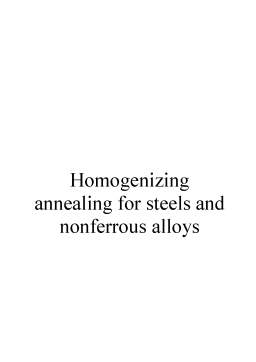Extras din referat
Annealing: A term denoting a treatment, consisting of heating to and holding at a suitable temperature followed by cooling at a suitable rate, used primarily to soften but also to simultaneously produce desired changes in other properties or in microstructure. The purpose
of such changes may be, but is not confined to, improvement of machinability; facilitation of cold working; improvement of mechanical or electrical properties; or increase in stability of dimensions. The time–temperature cycles used vary widely both in maximum temperature attained and in cooling rate employed, depending on the composition of the material, its condition, and the results desired. When applicable, the following more specific process names should be used: Black Annealing, Blue Annealing, Box Annealing, Bright Annealing, Cycle Annealing, Flame Annealing, Full Annealing, Graphitizing, Intermediate Annealing, Isothermal Annealing, Process Annealing, Quench Annealing, and Spheroidizing. When the term is used without qualification, full annealing is implied. When applied only for the relief of stress, the process is properly called stress relieving.
Annealing STEEL
The purpose of annealing is not only to soften steel for machining, but to remove all strains incident to rolling or hammering. A common method of annealing is to pack the steel in a cast-iron box containing some material, such as powdered charcoal, charred bone, charred leather, slaked lime, sand, fireclay, etc. The box and its contents are then heated in a furnace to the proper temperature, for a length of time depending upon the size of the steel. After heating, the box and its contents should be allowed to cool at a rate slow enough to prevent any hardening. It is essential, when annealing, to exclude the air as completely as possible while the steel is hot, to prevent the outside of the steel from becoming oxidized.
The temperature required for annealing should be slightly above the critical point, which varies for different steels. Low-carbon steel should be annealed at about 1650 degrees F., and high-carbon steel at between 1400 degrees and 1500 degrees F. This temperature should be maintained just long enough to heat the entire piece evenly throughout. Care should be taken not to heat the steel much above the decalescence or hardening point. When steel is heated above this temperature, the grain assumes a definite size for that particular temperature, the coarseness increasing with an increase in temperature. Moreover, if steel that has been heated above the critical point is cooled slowly, the coarseness of the grain corresponds to the coarseness at the maximum temperature; hence, the grain of annealed steel is coarser, the higher the temperature to which it is heated above the critical point.
If only a small piece of steel or a single tool is to be annealed, this can be done by building up a firebrick box in an ordinary blacksmith's fire, placing the tool in it, covering over the top, then heating the whole, covering with coke and leaving it to cool over night. Another quick method is to heat the steel to a red heat, bury it in dry sand, sawdust, lime or hot ashes, and allow it to cool. Quick annealing can also be partially effected by heating the piece to a dull black-red and plunging it into hot water. This method is not to be recommended.
Annealing is commonly used after casting, forging or rolling to soften materials and minimise residual stresses, improve machinability, and increase ductility by carefully controlling the microstructure. Many steels in strip form are annealed, as are most tool steels and stainless steels. Non-ferrous alloys are also annealed. There are several process variations that qualify as annealing treatments:
Full annealing is performed on steels by heating to a high temperature (typically 830-950°C), then cooling slowly to ambient temperature. Non-ferrous materials are softened and refined by full annealing at temperatures appropriate for each alloy.
Isothermal / cyclic annealing is performed by heating steels to the full annealing temperature, cooling to an intermediate temperature (typically 550-700°C) and soaking for a long period to allow transformation to proceed slowly, followed by cooling to ambient temperature.
Preview document
Conținut arhivă zip
- Homogenizing Annealing for Steels and Nonferrous Alloys.doc















